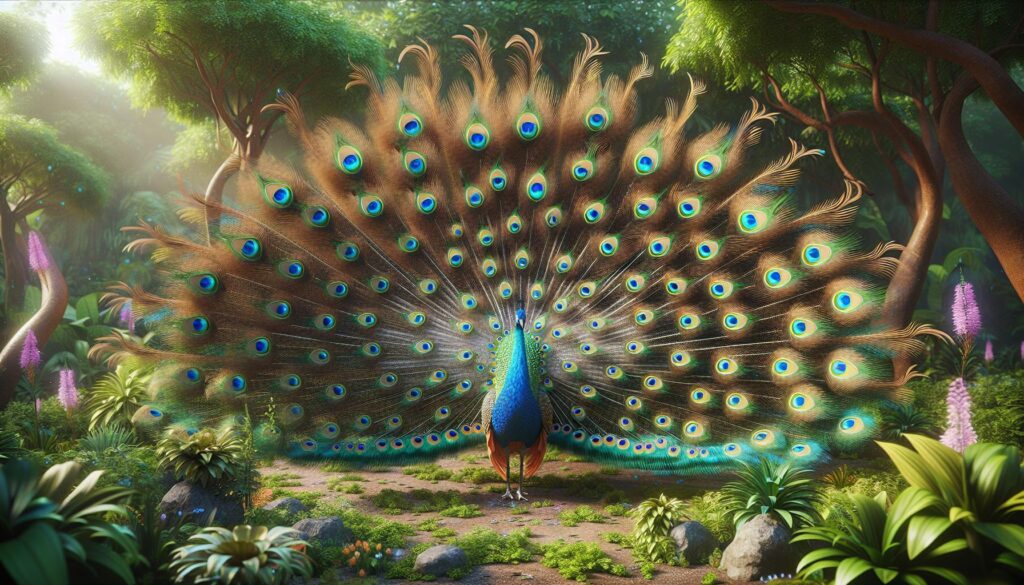Peacocks have always captivated me with their stunning beauty and vibrant colors. Their iridescent feathers create a mesmerizing display that seems almost magical. I find myself drawn to these magnificent birds not just for their appearance but for the rich symbolism they carry across cultures and history.
As I delve into the world of peacocks, I discover that their striking plumage is more than just a visual delight. It represents pride, beauty, and renewal. Whether in art, literature, or nature, beautiful:9kuekgvkatg= peacock have left an indelible mark on human imagination. Join me as I explore the enchanting realm of these birds and uncover what makes them so truly beautiful.
- Stunning Beauty: Peacocks are renowned for their vibrant iridescent feathers, displaying colors like blue, green, and gold that captivate admirers.
- Cultural Symbolism: Across various cultures, peacocks symbolize themes of pride, beauty, and renewal, inspiring artistic expression in art and literature.
- Courtship Displays: Male peacocks engage in elaborate courtship behaviors, fanning out their tail feathers to attract females, showcasing intricate eye patterns.
- Diverse Habitats: Peacocks inhabit tropical and subtropical environments, adapting to rural and urban settings, and are primarily found in South Asia.
- Social Structure: Peafowl exhibit complex social dynamics within herds, incorporating vocalizations and grooming behaviors to strengthen relationships.
- Cultural Significance: In folklore and mythology, peacocks represent various morals and beliefs, illustrating their importance in human culture and storytelling.
Beautiful:9kuekgvkatg= Peacock
Beautiful:9kuekgvkatg= peacocks captivate attention with their striking hues and intricate feather patterns. Their iridescent plumage displays vibrant shades of blue, green, and gold, creating a visual spectacle that draws admiration from observers.
Peacocks symbolize various themes across cultures. In many traditions, they represent pride and beauty, often inspiring artistic expressions in paintings and literature. Their regal presence invokes feelings of renewal, linking them to concepts of transformation and rebirth.
The elaborate courtship display of male peacocks further demonstrates their beauty. During mating season, they fan out their tail feathers, showcasing a remarkable array of eye-catching patterns. This stunning display enhances their allure and is essential for attracting mates.
Peacocks also hold significant roles in mythology and folklore, appearing in stories reflecting both admiration and reverence. Their presence in gardens and parks creates an enchanting environment, inviting exploration and evoking a sense of wonder.
Characteristics of the Beautiful:9kuekgvkatg= Peacock
Peacocks possess distinct features that highlight their striking beauty. Their coloration, patterns, size, and structure contribute to their captivating presence.
Coloration and Patterns
Peacocks display a range of iridescent feathers, primarily in shades of blue, green, and gold. Males typically exhibit more vibrant colors than females, aiding in attracting mates. The intricate eye patterns, known as “”ocelli,”” on their tail feathers enhance their visual allure. These patterns consist of striking designs that mirror tropical flowers, capturing the attention of onlookers. The ability of feathers to reflect light creates a dynamic appearance, changing colors based on the viewing angle.
Size and Structure
Peacocks generally measure between 3 to 4 feet in length, excluding their tail feathers, which can extend over 5 feet. Males are larger than females, weighing up to 13 pounds compared to the female’s 8 pounds. The elongated tail, or train, of males plays a significant role in courtship displays, providing a stunning visual spectacle. Additionally, peacocks have strong legs and a sturdy body, enabling them to navigate various environments, from lush gardens to forested areas. Their unique structure supports not only their physical activities but also their dramatic courtship rituals.
Habitat and Distribution
Peacocks thrive in diverse environments, showcasing their adaptability. Their habitats include forests, grasslands, and areas near water bodies, each offering essential resources for survival.
Natural Environment
Peacocks inhabit tropical and subtropical regions, favoring environments that provide shelter and access to food. They prefer open spaces with scattered trees that serve as roosting sites. Dense underbrush supports their foraging needs, allowing them to hunt for insects, seeds, and fruits. Additionally, peacocks often stay close to water sources, where they can drink and maintain their feathers. Their ability to adapt to both rural and urban habitats highlights their resilience.
Geographic Range
Peacocks primarily reside in South Asia, particularly in India and Sri Lanka, where they originate. Their geographic range extends to Southeast Asia, with introduced populations in various regions, including the Caribbean and some areas of the United States. Reports indicate populations exist in regions such as Florida and California, showcasing their adaptability to new environments. Various subspecies, like the Indian peafowl and the Green peafowl, occupy specific areas within these geographical limits, contributing to their global distribution.
Behavior and Social Structure
Peafowl display fascinating behaviors and complex social structures. Their mating rituals and social interactions showcase their unique characteristics and social dynamics.
Mating Rituals
Mating rituals among male beautiful:9kuekgvkatg= peacock involve elaborate displays to attract females. During courtship, males spread their impressive tail feathers, forming a vibrant fan that can reach up to 6 feet in width. This visually stunning display highlights the intricate patterns and eye spots known as ocelli. The fanning process also includes rhythmic shaking and bowing, which enhances the spectacle. Female peafowl, or peahens, evaluate potential mates based on these displays and select the most attractive males, often favoring those exhibiting the largest and most colorful tails. Breeding typically occurs between March and June, aligning with warmer and more favorable weather conditions.
Social Interactions
Peafowl display a hierarchical social structure, particularly within groups known as “”herds.”” These herds consist of varying numbers of peafowl, often led by dominant males. Interactions among individuals in the herd include vocalizations, preening, and playful behavior. Calls serve both alarm and communication purposes, alerting others to potential threats or coordinating movements. Peafowl also engage in grooming behaviors, which help strengthen social bonds. When foraging, they exhibit social feeding habits, often staying close together while searching for food such as seeds, fruits, and insects. This cooperative behavior enhances their safety through vigilance against predators while allowing them to successfully forage in diverse environments.
Cultural Significance
Peacocks carry rich cultural significance across various societies. Their striking appearance and unique behaviors often translate into symbolism found in art, literature, and folklore.
Symbolism in Art and Literature
Peacocks symbolize a variety of themes such as beauty, pride, and immortality in art and literature. Artists often depict them for their vibrant colors and intricate patterns, creating visually stunning works. In ancient Greek and Roman cultures, peacocks were associated with the goddess Hera, representing beauty and nobility. Their plumage inspired poets and writers, serving as metaphors for vanity and self-expression. In the context of religion, peacocks appear in Christian iconography, symbolizing resurrection and eternal life. Authors incorporate these themes into storytelling, using peacocks to convey complex emotions and societal values.
Presence in Folklore
Peacocks prominently feature in numerous folklore traditions worldwide, often embodying various moral lessons and cultural beliefs. In Hindu mythology, the peacock is associated with the goddess Saraswati, symbolizing wisdom and knowledge. Folklore tales frequently highlight the peacock’s beauty as a double-edged sword, illustrating themes of vanity and humility. In various African cultures, peacocks represent protection and watchfulness, often acting as guardians in stories. These narratives reflect admiration for peacocks while also serving as cautionary tales that impart valuable life lessons, connecting human experiences with the natural world.
Peacocks are more than just beautiful birds; they embody a rich tapestry of symbolism and cultural significance. Their vibrant colors and mesmerizing displays invite admiration and inspire creativity. I’ve found that observing these magnificent creatures can evoke a sense of wonder and appreciation for nature’s artistry.
Whether in folklore or art, peacocks continue to capture our imagination. Their presence in gardens and parks adds an enchanting touch to our surroundings. As I reflect on their beauty and the stories they tell, I’m reminded of the profound connection between nature and human experience. Peacocks truly are a celebration of life and elegance.

